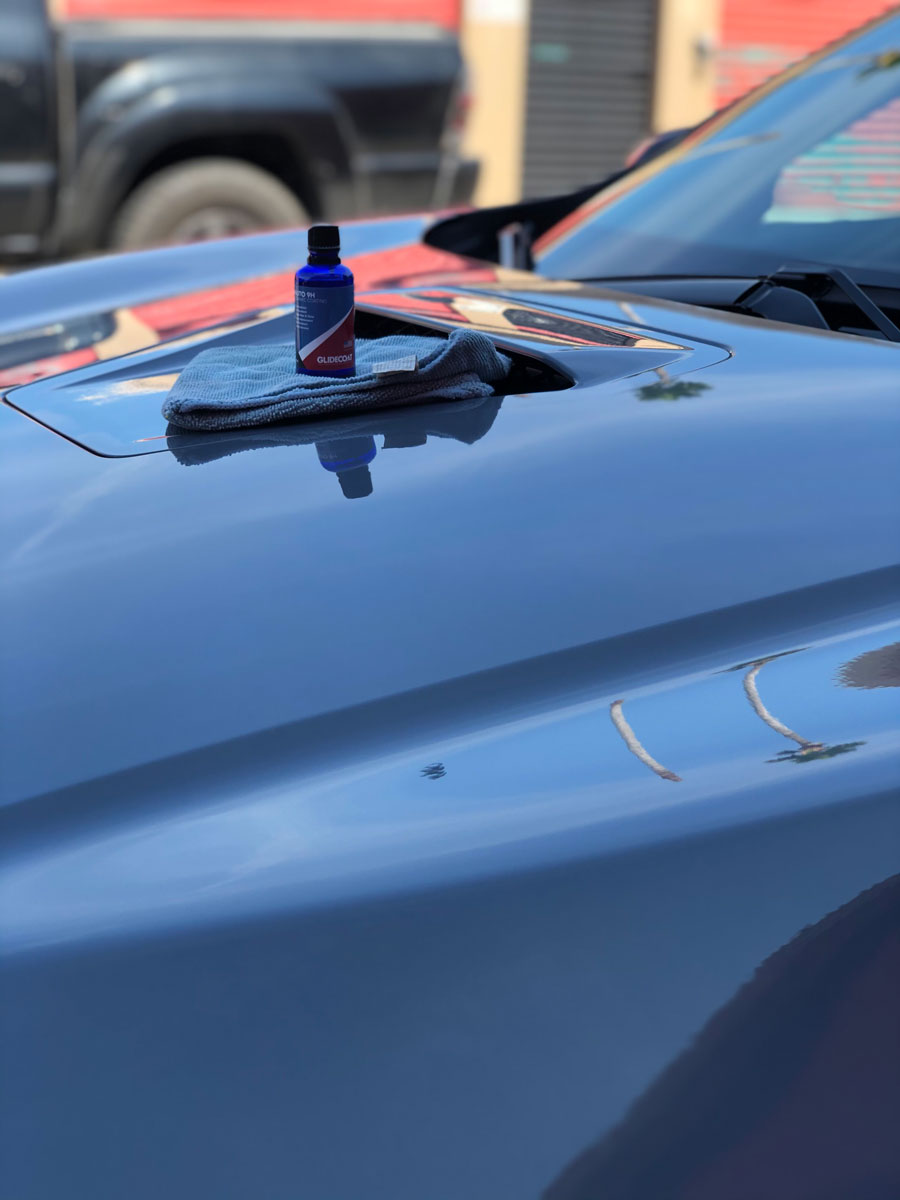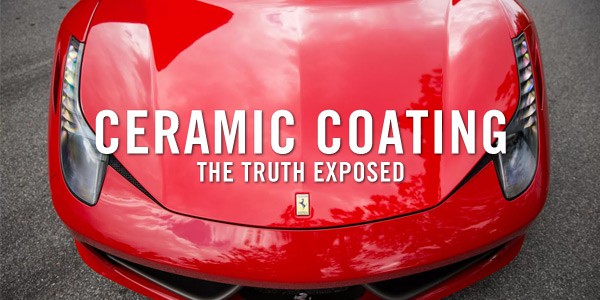What to Expect During Your Ceramic Coating Application Process
What to Expect During Your Ceramic Coating Application Process
Blog Article
The Role of Ceramic Coating in Shielding Your Cars and truck's Paint From Environmental Damage
Ceramic finish has emerged as an advanced remedy for automobile proprietors looking for to preserve the stability of their automobile's outside. As we explore the nuances of ceramic finish, it comes to be evident that the option to execute this protective procedure can significantly influence your car's durability and visual.
What Is Ceramic Coating?
Ceramic coating is an advanced fluid polymer put on the external surface areas of a vehicle, designed to offer a long lasting layer of security for the paint. This cutting-edge remedy creates a chemical bond with the car's manufacturing facility paint, developing a resistant and hydrophobic guard. The finishing contains nanoparticles that fill up in the microscopic blemishes in the paint, resulting in a smooth surface area that boosts shine and gloss.
Commonly, ceramic finishes are readily available in different formulations, enabling different degrees of defense and durability. While some products can last for a number of months, others use security for several years, depending upon the density of the application and environmental aspects. The application procedure requires thorough prep work, including washing, sanitizing, and brightening the lorry's surface area to ensure optimal bond of the finish.

Advantages of Ceramic Covering
One of the key advantages of using a ceramic layer is the exceptional protection it provides to automotive paint. This advanced covering develops a long lasting layer that shields the lorry's surface area from a selection of ecological risks, consisting of UV rays, acid rain, bird droppings, and tree sap. By providing this durable protection, ceramic finishings substantially reduce the danger of fading and etching, preserving the vehicle's visual charm in time.
In enhancement to protection, ceramic coatings are renowned for their hydrophobic buildings, which ward off water and dirt, making it easier to keep a tidy automobile. This self-cleaning result lowers the regularity of cleaning, conserving both time and resources. Ceramic finishes enhance the deepness of the paint's gloss, resulting in a vivid and sleek look that elevates the general look of the vehicle.
Another notable benefit is the longevity of ceramic finishings. Unlike conventional waxes or sealers that require constant reapplication, ceramic coverings can last a number of years, using a cost-efficient service for vehicle owners seeking long-term defense. Generally, buying ceramic layer causes improved toughness, minimized upkeep, and sustained visual appeal for automobile paint.
Exactly How Ceramic Layer Functions
A ceramic finishing operates through a chemical bonding procedure that develops a safety layer on the car's paint surface area. This ingenious remedy makes use of sophisticated nanotechnology, where tiny bits of silica are put on hold in a liquid type - ceramic coating. Upon application, these fragments bond with the factory paint, forming a sturdy and hydrophobic layer that improves the automobile's surface area
The primary element of ceramic finishings, silicon dioxide (SiO2), adds to the finishing's stamina and durability. When healed, the finishing transforms right into a hard, glass-like surface that guards the paint from environmental impurities such as dirt, UV rays, bird droppings, and tree sap. This molecular bond leads to a surface that is not only resistant to scratches yet likewise less complicated to clean up, as dust and gunk are much less likely to adhere.
In addition, the hydrophobic properties of ceramic coatings cause water to bead and slide off, minimizing the opportunities of water areas and mineral deposits. This protective barrier properly extends the life of the paint and preserves the car's visual appeal, using cars and truck proprietors a durable solution for paint defense.
Application Refine of Ceramic Coating
When considering the application of ceramic coating, prep work is vital to achieving ideal outcomes. The initial step includes completely cleaning the automobile to get rid of dust, grime, and pollutants from the surface. This usually consists of a decontamination process these details utilizing clay bars or chemical cleaners to make sure the paint is flawlessly clean. Any type of scratches or flaws need to be addressed at this stage, as the covering will bond with the surface beneath.

Ceramic coating is after that applied in little areas, normally making use best site of an applicator pad. The automobile needs to be left to treat in a controlled atmosphere to enable the finish to totally bond with the paint.
Long-Term Upkeep and Treatment
Attaining a successful ceramic coating application sets the foundation for lasting security, yet proper upkeep is essential to maintaining its benefits. Regular cleaning is important; using a pH-neutral vehicle shampoo will certainly help preserve the finishing's stability without creating damage. Avoid automated vehicle washes that usage unpleasant products, as they can compromise the finish's surface area.

Furthermore, using a ceramic finishing maintenance spray can enhance the existing layer, giving an added boost in security and luster. It's suggested to do this every three to six months, depending upon ecological direct exposure.
Lastly, vehicle parking in shaded locations or making use of automobile covers can prevent prolonged exposure to dangerous UV rays and ecological contaminants, even more extending the life of your ceramic finish. By adhering to these upkeep methods, you can guarantee your car's surface remains secured and aesthetically appealing for many years to find.
Verdict
In recap, ceramic finish works as a vital protective step for automotive paint, successfully shielding cars from an array of environmental threats. Its capacity to develop a durable hydrophobic barrier not only boosts visual allure yet additionally Homepage substantially reduces the regularity and intensity of upkeep needed. The durable nature of this innovative polymer underscores its value in maintaining car stability and appearance, eventually contributing to a more aesthetically appealing and long lasting vehicle finish.
Ceramic finish is an innovative liquid polymer used to the external surface areas of a lorry, made to supply a sturdy layer of protection for the paint. Ceramic layers enhance the deepness of the paint's gloss, resulting in a vivid and refined look that boosts the overall look of the lorry.
A ceramic coating operates via a chemical bonding process that develops a protective layer on the vehicle's paint surface area.The major element of ceramic coatings, silicon dioxide (SiO2), adds to the covering's toughness and durability.In recap, ceramic finishing serves as an essential safety procedure for auto paint, successfully shielding cars from an array of ecological dangers.
Report this page